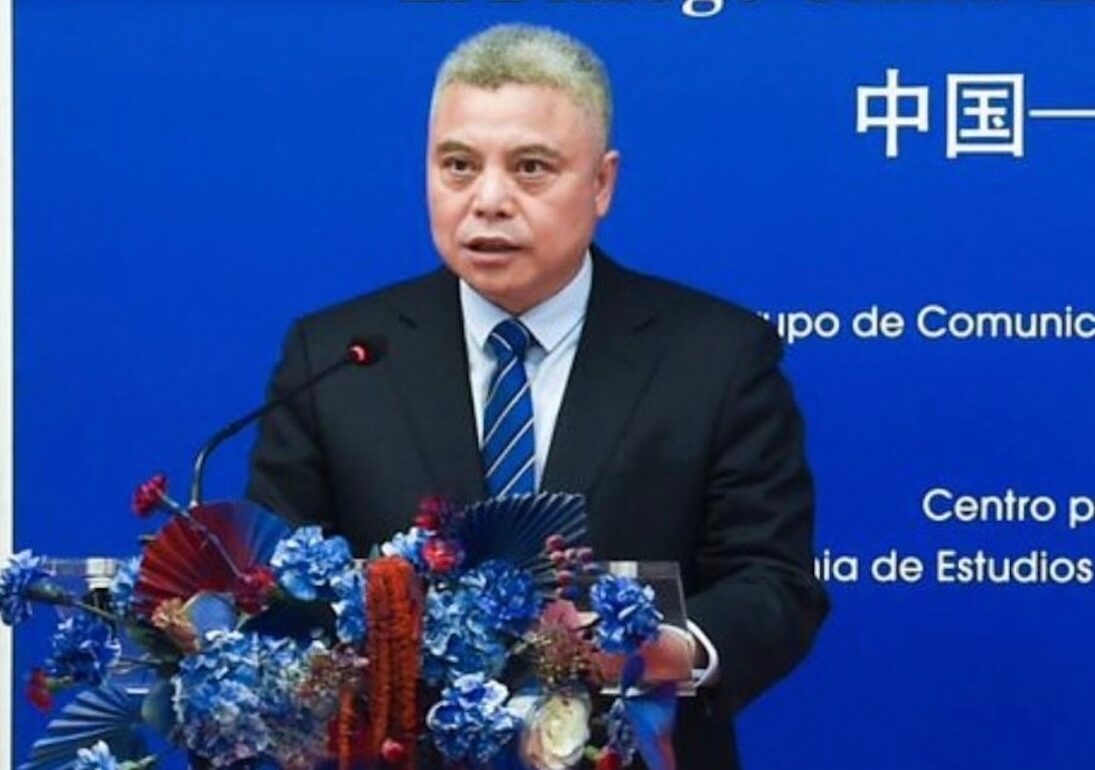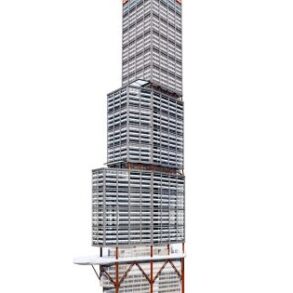Chinese and Spanish participants agreed that the dialogue, “Urban Planning and Cultural Development,” is of great importance to the construction and development of urban civilization.
Urban planning provides the space and platform for the development of urban civilization, while cultural development endows the city with unique soul and charm.
In terms of people-centered urban planning concepts, respect for nature, the importance of cultural heritage and sustainable development, both countries have many similarities and unique practical experiences.
The participants reached the following consensus: first, to inherit cultural heritage and preserve the historical legacy of cities; second, to promote cultural innovation to shape future urban development; and third, to deepen cultural exchange to write a new chapter of shared civilization.
The inauguration was attended by Hu Kaihong, the Vice Minister in charge of the Central Office of Cultural and Ethical Progress; Yao Jing, Chinese Ambassador to Spain; María Reyes Maroto Illera, spokesperson of the Socialist Party in the Madrid Assembly (and former Minister of Industry, Trade and Tourism of Spain); Natalia Ucero Pérez, senator of the Popular Party and first secretary of the Foreign Affairs Committee of the Spanish Senate; Antonio Miguel Carmona, well-known business executive recently appointed member of the board of directors of the Spanish employers’ association CEOE; and Zhao Lijun, director of the Communication Center for Western Europe and Africa of the State Council Information Office (China Hoy).
“China Today Madrid Salon”
Precisely it was Zhao Lijun and Antonio Miguel Carmona, who is also president of the China-Spain Friendship Association, who jointly inaugurated the “China Today Madrid Salon”. Zhao Lijun expressed his joy to officially launch the “Madrid Salon of China Today” on such an important occasion of mutual exchange and learning on urban civilization between China and Spain, in the presence of guests from both countries.

“The “China Today Madrid Salon” will provide a new platform for cooperation between China and Spain in fields such as economy and trade, culture, media and think tanks.
The salon will aim to promote dialogue, exchange and mutual understanding between China and Spain and between China and Europe, becoming a window for the Spanish and European public to learn about Chinese culture. “We will organize forums and exchange activities in the fields of culture, media, publishing and think tanks to better promote mutual exchange and learning between China and Spain, and between China and Europe,” Zhao Lijun said.
Carmona pointed out that in Europe, people still do not have sufficient knowledge and understanding of China, and do not know what China is really like. “The creation of the Madrid China Today Salon will promote the exchange between China and Spain, and between China and Europe, helping various sectors in Spain to more fully understand China.
” The dialogue was organized by the State Council Information Office of China and the China-Spain Friendship Association, and co-organized by the Communication Center for Western Europe and Africa of the State Council Information Office (China Today), the Institute for Contemporary China and World Studies, the “Dialogue with China” project and the China Classroom in Spain. More than 100 experts and scholars from both countries attended the event.
Urban planning and cultural development
Hu Kaihong pointed out in his speech that urban planning and cultural development are of crucial importance to the construction and development of urban civilization.
Urban planning provides the space and platform for the development of urban civilization, while cultural development endows the city with unique soul and charm.

In terms of urban planning concepts, such as the people-centered approach, respect for nature, the importance of cultural heritage and green development, both China and Spain have many similarities as well as unique practical experiences.
In exploring new avenues for urban development, Hu Kaihong shared the following points for reflection: first, preserve cultural heritage and protect the city’s history and legacy together; second, boost cultural innovation and forge the future of urban development together; and third, deepen cultural exchange and write a new chapter of shared civilization together.
Spain-China
Ambassador Yao Jing pointed out that last year China and Spain celebrated the 50th anniversary of the establishment of diplomatic relations, and next year will mark the 20th anniversary of the establishment of the comprehensive strategic partnership between the two countries.

A series of exchange activities in various fields are taking China-Spain relations to a new level. With the implementation of the 15-day visa waiver for Spanish citizens traveling to China, people-to-people exchanges between the two countries will become increasingly close, and around 800,000 Chinese tourists are expected to visit Spain this year.
How to integrate the present with the past, and how to combine development with livability, are questions for urban planners in China and Spain to ponder together. He believes that this dialogue on urban civilization will help mutual learning and the promotion of common development.

Reyes Maroto noted in her speech, “The common challenge we face now is how to build more livable and humanized cities.” She believes that, in addition to emphasizing the construction and development of cities, it should be recognized that the city is also a space for social interaction, and stressed the importance of recovering public spaces for citizens.
Natalia Ucero Pérez said that urban planning is not only about organizing space, but also about adapting to the habits and lifestyles of local people. Both China and Spain are millenary countries with a rich cultural heritage.
Dialogue on urban civilization can help urban planners explore, through direct exchange, more effective ways to achieve more humanized urban development.

“One Riverbank, One River.”
Liu Shilin, director of the Institute of Urban Science at Shanghai Jiao Tong University and director of the Research Department of the China Association for the Promotion of Urbanization, lectured on the urban renewal and cultural revitalization of “One Riverside, One River” in Shanghai.
He pointed out that, in the past decade, the Suzhou River, along with other sections of the Huangpu River in Shanghai, has changed from a “rusty industrial strip” and a “dilapidated old neighborhood” to become a “scenic strip of life” and a “space of innovation,” forming a new model of “One Riverside, One River” in Shanghai.
This model has become an important example of urban renewal and cultural heritage in China, and provides a valuable reference for the development of other cities around the world.
He stressed that the 2010 Shanghai World Expo proposed that “city makes life better”, and as a continuation of the spirit of the Expo, the revitalization of “One Riverside, One River” aims to “return water to the people”, “return landscape to the people” and “return a better life to the citizens”.
Zhang Yingle, professor of the Department of Architecture at Southeast University and visiting professor of the Faculty of Architecture at the Technical University of Berlin, gave a lecture on the renovation of urban historic neighborhoods in China from the perspective of cultural development.
He pointed out that the renovation of urban historic neighborhoods has become a priority in China’s current urban renewal, and that the focus has shifted from early comprehensive protection to quality upgrading based on the principle of “value protection and functional upgrading.”
Historic neighborhoods are no longer relics to be protected, but an integral part of the cultural, social and economic development of the modern city. Through specific cases, Zhang Yingle emphasized that spatial redevelopment of neighborhood culture not only preserves people’s memory of their living spaces, but also revitalizes historic neighborhoods, integrating them into the diversified cultural and economic development of the modern city.
Urban planning and the environment
Renowned Spanish architect Maria Rosa Sevilha, president of the China Classroom, gave a lecture on how to integrate urban planning with ecological protection and carbon emission reduction to create high-quality living spaces for urban residents.
She mentioned that Chinese civilization has emphasized harmony between man and nature since ancient times, and felt that this concept is especially relevant today.
Sevilha proposed that urban planning should incorporate more design related to the natural environment, including planning for forest parks, urban green corridors and orchards, as well as using the roofs and facades of existing buildings to plant vegetation, which not only beautifies the environment, but also absorbs carbon dioxide from the air.
She also stressed the importance of considering how to reduce carbon emissions in urban construction, including energy-efficient design and materials. Sevilha also mentioned that architectural design can be inspired by nature, such as the structures of some organisms like shells and flowers, and considered that this nature-based sustainable design approach is setting a new international trend.
Spanish architect Juan Alberto, a professor at Gengdan University in Beijing, based his lecture on his teaching and architectural design experience in several countries, and discussed how to reflect and promote the sustainable development of the natural environment in urban design.
He emphasized that architectural design must overcome existing mentalities that have caused many environmental problems, valuing valuable traditions while being creative and imaginative.
Through specific examples from China and Spain, he highlighted both countries’ beneficial attempts to promote harmonious coexistence between nature and the urban environment in urban planning, as well as specific practices to solve problems of urban public spaces.
Cities are containers of culture, and culture is the soul of cities. Many cities with rich history and culture have two facets: one is the old city, the historic city, with many historic cultural neighborhoods that need to be protected and preserved; the other is the new city, the city of the future, where people expect to continuously improve the living and housing environment.
Only when both facets are satisfied, culture can be preserved and innovated in the city container, thus achieving true cultural development.
In the process of urban planning, construction and renovation, how to manage the relationship between the old city and the new city, the historical city and the city of the future?
How to manage the relationship between culture, production and life to create an urban container that not only preserves cultural history but also fosters economic and social innovation?
Dialogue Discussion
In the dialogue discussion session, urban planners and architectural designers from China and Spain discussed these issues. Participants included Zhao Jie, deputy director of the Nanjing Civilization Bureau; Angel Salaboso, vice president of the Madrid Capital of the World Association; Liu Shilin, director of the Institute of Urban Sciences at Shanghai Jiao Tong University; Jose Luis Esteban Penelas, senior lecturer of Architecture at the European University of Madrid and founder of Penelas Architecture Studio; Zhang Yingle, professor of the Department of Architecture at Southeast University; and Maria Jose Masno, member of the UNESCO Committee on Intermediary Cities. They shared classic cases and concepts from China and Spain in this field.
In the dialogue, the Institute of Contemporary China and World Studies launched a research project on exchange and mutual learning of urban civilization. Yuan Lin, director of the Special Projects Office of the Institute of Contemporary China and World Studies, explained that the project aims to establish a dialogue platform for urban research between China and other countries, encouraging urban rulers, managers and researchers from both sides to raise issues that need to be investigated, organizing joint researches.
This post was originally published on this site be sure to check out more of their content.







